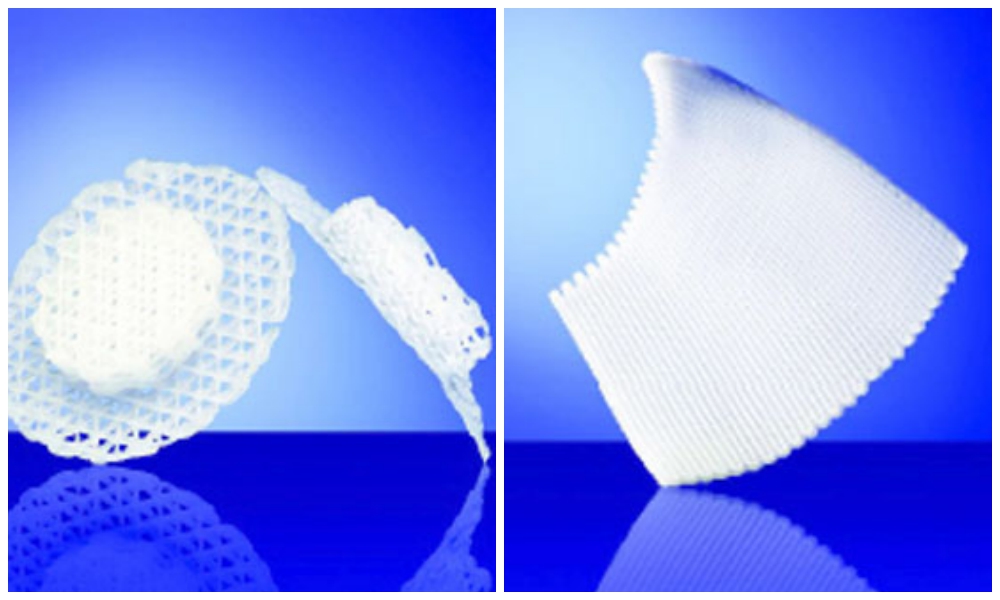3D printed implant developer Osteopore has teamed up with Maastricht University Medical Centre (UMC+) to develop a bioresorbable bone implant that could prevent lower leg amputations, made possible using a 3D printer.
The 3D printed ‘cage’ is designed to aid patients in regenerating new bone cells and has been successfully implanted in its first patient in the Netherlands.

Simulating bone cell growth
Developed to prevent amputations in patients with severe lower leg fractures, the 3D printed cage was developed with Osteopore’s proprietary 3D printing and materials technology. The structure is customized based upon a CT scan of the patient’s lower leg. It is printed in a biodegradable material to eventually break down into water and carbon dioxide within the body. The personalized cage is then created by a 3D printer based on the patient’s CT scan.
The material in question is an FDA-approved polymer called polycaprolactone (PCL), which possesses mechanical strength similar to that of trabecular bone – porous bone found at the ends of long bones such as the femur. In addition to being bioresorbable, PCL’s malleable and slow-degrading properties make it an ideal material candidate for 3D printed bone implants.
The 3D printed cage is engineered to stimulate the patient’s new bone cells to grow within it as it becomes gradually replaced by the patients’ bone over the course of several months. According to Osteopore, since having the cage implanted, the first patient treated with the implant is on track to experience complete bone regrowth.
Osteopore and UMC+ believe this first-of-its-kind development can help to prevent lower-leg amputations in patients that would previously have been unavoidable.

Advancing Singapore’s 3D printed medical devices sector
Established in 2003 by a team of clinicians and engineers, Osteopore has become one of Singapore’s leading forces in 3D printed bioresorbable implants. The firm manufactures its products in-house, enabling it to precisely control their shape, geometry, and biomimetic micro-architecture.
This unique architecture facilitates the infiltration of cells and blood vessels to enable tissue repair and is deployed in Osteopore’s current Osteomesh and Osteoplug implants. In December, the company announced a collaboration with the National University of Singapore (NUS) spin-off Magloy Tech to commercialize the latest addition to its product range, the Orthomag bone graft implant.
In 2017, Singapore’s National Additive Manufacturing Innovation Cluster (NAMIC), NUS, and the country’s Economic Development Board invested $13.2 million in a specialist biomedical facility, the National University of Singapore Center for Additive Manufacturing (AM.NUS). Osteopore signed a memorandum of understanding (MOU) with NAMIC to clear clinical trials for its 3D printed orthopedic devices at the AM.NUS.
Now, the two parties are extending their partnership to upscale the clinical adoption of 3D printing in Singapore. The collaboration will work to put in place an established healthcare model within the country’s hospitals to increase the success rate of local clinical cases for 3D printed regenerative medical implant solutions. Additionally, the partnership hopes to grow the adoption of 3D printed bioresorbable implants at the clinical level to achieve improved patient outcomes and lower healthcare costs.
Subscribe to the 3D Printing Industry newsletter for the latest news in additive manufacturing. You can also stay connected by following us on Twitter and liking us on Facebook.
Be sure to subscribe to the Another Dimension podcast on your chosen podcast player to make sure you never miss an episode.
Looking for a career in additive manufacturing? Visit 3D Printing Jobs for a selection of roles in the industry.
Featured image shows featured image shows Osteopore’s in-house 3D printing process and 3D printer. Photo via Osteopore.



